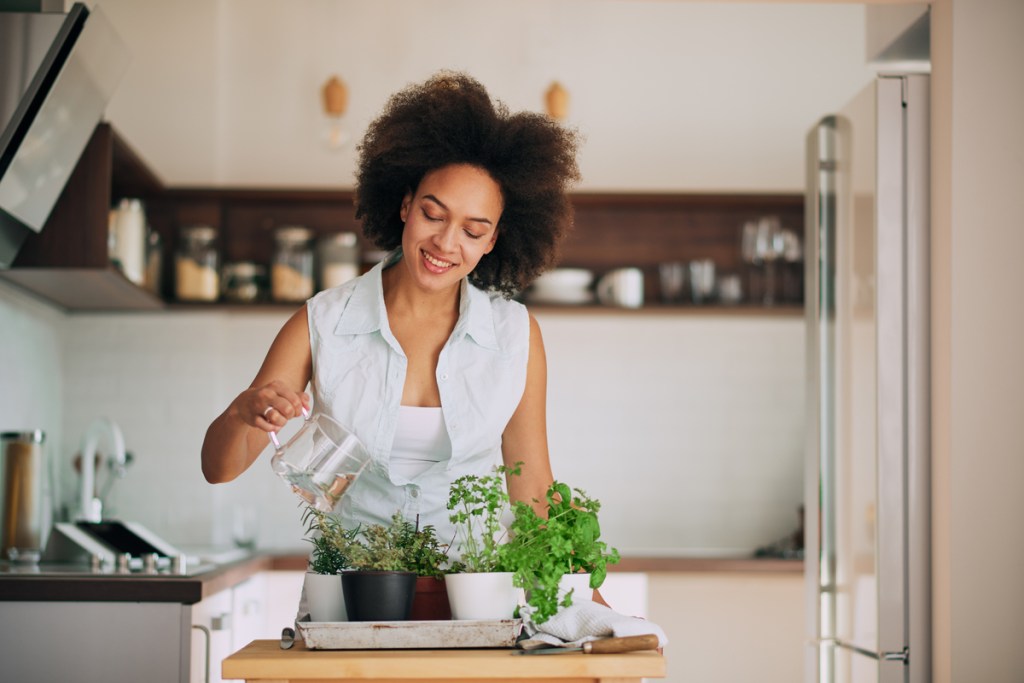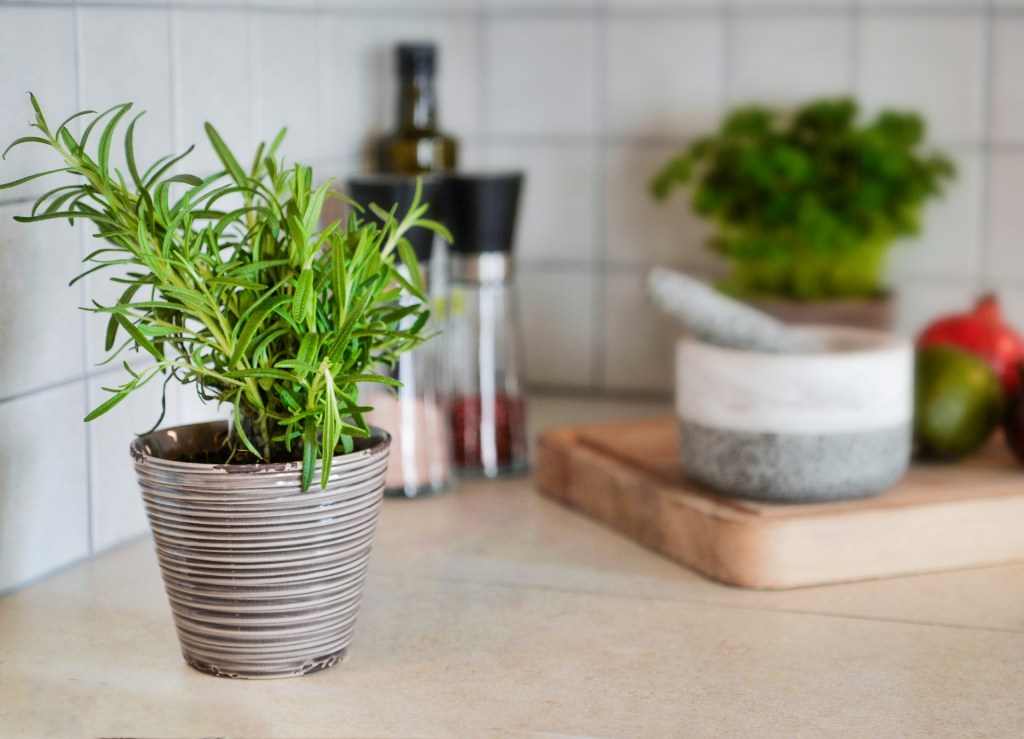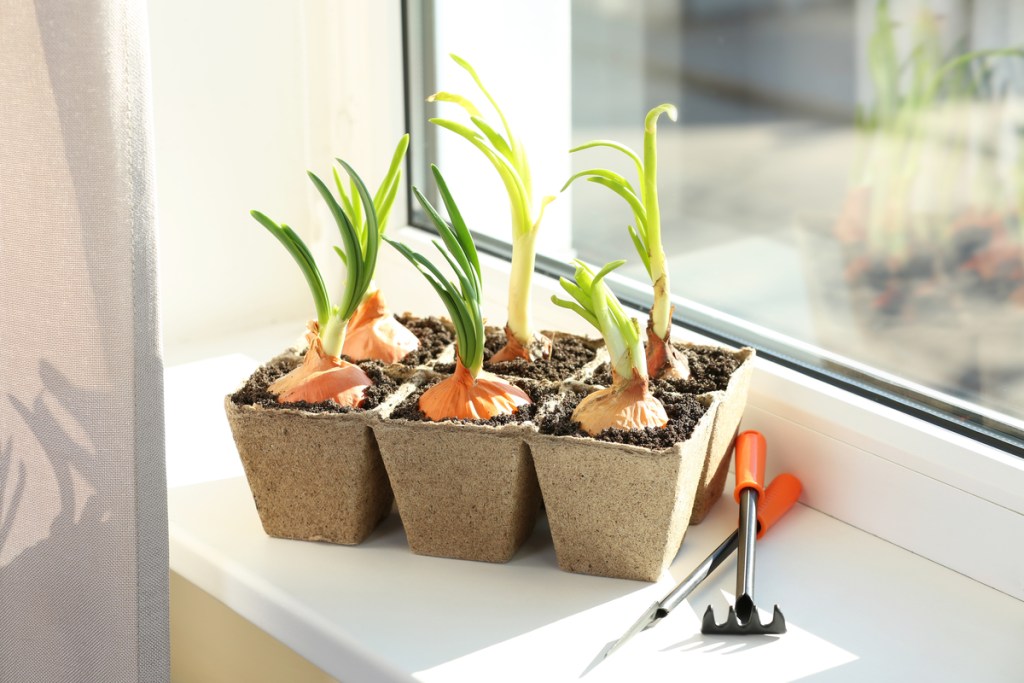Come fall when the growing season ends, a lot of gardeners will spend the winter prepping and thinking about what they want to grow next spring — all the while lamenting how they miss having fresh veggies and herbs around during the colder months. That doesn’t have to be the case, though. You can easily grow some of your favorite veggies indoors, even without a greenhouse.
Although you can’t grow everything, and the indoor harvests are often smaller, you’ll be able to have enough that you can still enjoy the feeling of preparing and eating something you grew. What’s more, you can even use these tips and tricks to grow fresh veggies year-round if you don’t have the outdoor space for a traditional garden!

Benefits of indoor winter gardening
The biggest, most obvious benefit of indoor winter gardening is that you’ll be able to have fresh ingredients in your home year-round. Some things will still need to be bought from the store, but instead of adding dried rosemary to your turkey, you can use fresh sprigs cut right from the plant. With most indoor veggie plants, you can also harvest as needed until the crops reach their full size. So where you’d buy fully grown produce at the store (with who knows how long of a shelf life), you can replace it with a pepper snipped right from the plant and leave the others to grow a bit longer.
In that respect, it’s also a bit more cost-effective. You won’t feel like you’re throwing money down the drain if you don’t use up your peppers or carrots before they go bad, and you’ll have the fulfillment of caring and nurturing the plants as you do the rest of the year. Since you’ll only be harvesting what you need, it also helps to reduce food waste. It’s a win-win in our book.
Challenges of indoor winter gardening
Like all good things, indoor winter gardening comes with its challenges. There’s less light during the colder months, so having a successful harvest means you’ll need to purchase additional things like grow lights (and possibly space heaters or humidifiers) to meet the needs of your plants. The good news is that it’s a one-time expense. As long as you buy a good model that will last awhile, it’s a cost that only needs to be spent during the first year of your indoor winter garden, and then you won’t have to worry about it the following winter.
The other thing to keep in mind is that indoor plants don’t have access to outdoor pollination methods. This means that not every vegetable can be successfully grown in an indoor winter garden, and you’ll need to research the plants you’re interested in to see whether they rely on outside sources for pollination.

What materials do you need for an indoor garden?
Indoor gardening utilizes a lot of the same materials as outdoor gardening — with a few variations. These indoor veggies are houseplants. So you’ll need plant trays and plant stands to keep them off the ground and give excess water somewhere to drain to, as well as containers with good drainage (terracotta is always a prime choice) so that the roots don’t drown. Plant caddies are always a great purchase, too, so that you can easily move your plants around the home when needed.
You’ll need to make sure you have a potting soil suited for growing veggies or herbs, and pruners or shears will help with keeping the plants neat (and with harvesting when the time comes). Even indoors, having a pair of garden gloves helps protect your hands and work with the plants.
The variations come with the aforementioned lack of light and colder season. Depending on how dark and dry your home is, you may need to invest in grow lights, space heaters, and space humidifiers to keep your plants happy. If you’re an avid houseplant gardener, you may already have some of these on hand! If not, setting up an indoor winter garden is the perfect time to get some.

Maintaining your indoor winter garden
Maintaining your indoor winter garden is all about proper care. It’s important to take into account the needs of each plant you’re growing and meet them as best as possible. If you’re used to growing houseplants or having an outdoor garden, you can apply the same methods to indoor veggie plants, such as pruning, watering regularly, providing ample drainage, and making sure the room has enough light.
Chances are if a problem arises, it’s due to lack of care or an improper environment.
Troubleshooting and fixing problems
Indoor veggie gardens face some of the same common problems that houseplants do. The good news is, most of them are fixable as long as you catch them early enough and know what to do! The most prevalent ones include:
- Root rot. Root rot is a risk for all plants grown in pots because of how easy it is to overwater plants if you aren’t used to container gardening. Having a clay pot with a drainage hole is perfect for warding off root rot, as the hole allows excess water to drain and the unglazed clay can even absorb some. If you have a plant with soggy dirt that doesn’t seem to be doing well, take it out of the pot and see if there are any brown parts of the roots. If there are, trim them with sterilized shears. Repot in dry, fresh soil.
- Browning leaves. The biggest causes of browning leaves are under-watering and over-fertilizing. Figuring out which one is at fault will be dependent on the care you’ve been giving the plant, so make sure to keep track of when you water and when you fertilize. For example, if the leaves are browning but the soil is moist (not soggy), chances are you’re fertilizing too often.
- Curling leaves. Curling leaves start to form when a plant has been left dry for too long, whether it’s dry soil or too low humidity levels. Be mindful and diligent with your care, and you shouldn’t have this issue. If you notice curling leaves and the soil is dry, make sure to water the plant as you regularly would. Trying to overcompensate can cause root rot and other issues.
- Wilting or sunburnt leaves. Both of these are often signs that the plant is getting too much light. Although this likely won’t be a problem in an indoor winter garden, it’s still important to be mindful of. Too much light from grow lights can also cause adverse effects since plants do appreciate a certain amount of “night” in their cycle. If you have windows that get direct winter sun, make sure to move your plants slightly away from the windows so that they don’t feel the heat amplified through the glass.
- Yellowing leaves. Yellowing leaves are a bit more complex. They can be as simple as old leaves dying and falling off, which is a natural process. You’ll see this happening on the lower leaves of the plant. If new growth is turning yellow, the plant is either getting too much light or too much water. Be mindful and make sure you’re monitoring your care, as that’s the best way to figure out the cause of any problem your plants face.

What vegetables can you grow inside over winter?
Some plants are better suited for indoor gardening than others, and usually the determining factor is the root system. Container plants don’t have as much space to grow as those in garden beds, so the root systems don’t have as much room to spread out. The best vegetables to grow indoors during the winter (and in general) are ones with shallow roots. There are also some plants, like tomatoes, that have dwarf varieties that are specifically bred to grow in containers and smaller spaces. Other plants you can grow indoors include:
- Herbs
- Bell peppers
- Spinach (and other greens)
- Mushrooms
- Scallions
- Carrots
Make sure you research the proper care and environmental needs of each plant you grow to get a good idea of what your set-up needs to look like. Keeping track of your plant care is one of the best things you can do when it comes to indoor winter gardening. With proper care, you’ll be harvesting your fresh winter ingredients in no time.
Editors' Recommendations
- Beyond basil and cilantro, add these unique plants to your indoor herb garden
- Here’s how often you should be fertilizing your indoor plants
- 4 of the most aromatic indoor plants
- Is Epsom salt good for houseplants? What you need to know
- 5 companion plants to keep your chive plants company



